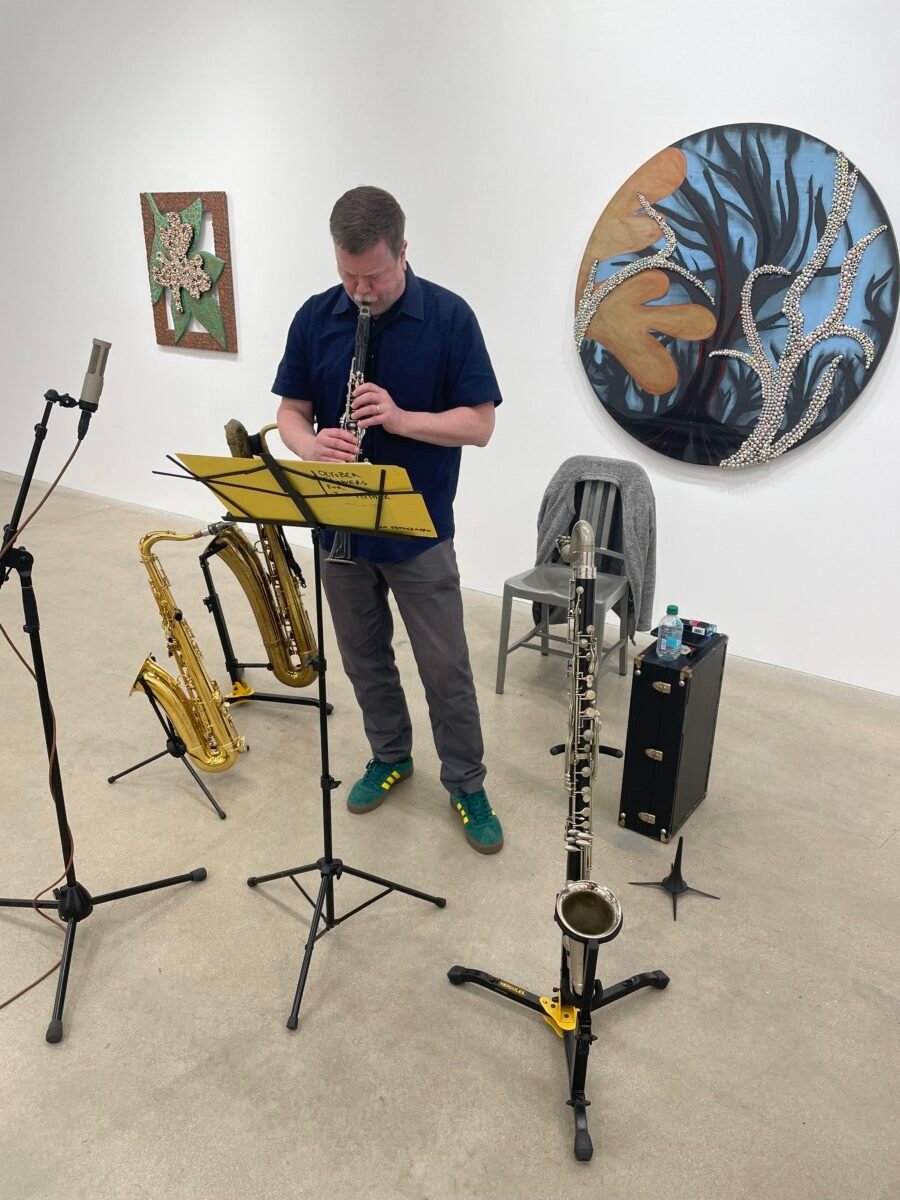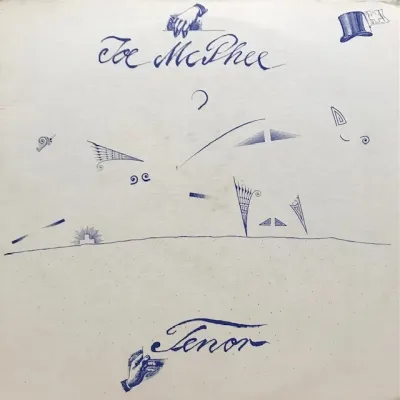Recording “October Flowers for Joe McPhee”

On the evening of March 17th one of the most significant recording sessions of my career took place. It was held at the Corbett vs. Dempsey gallery in front of a small audience, with Alex Inglizian recording. The material consisted of pieces I originally wrote to celebrate the gallery’s publication of Joe McPhee’s extraordinary memoir, “Straight Up, Without Wings: The Musical Flight of Joe McPhee” (co-written by Mike Faloon) which took place on October 18th of last year. John Corbett liked the compositions and wanted to document them being played in the space that they were initially performed.

The six pieces form a suite exploring territory that Joe indicated on his seminal solo album, “Tenor” (HatHut: 1977), as well as that of Jimmy Giuffre’s trio with Paul Pley and Steve Swallow on albums like “Free Fall” (Columbia: 1963). Due to this all the music was played on tenor sax and Bb clarinet at the first concert. For the recording, however, I decided to also play compositions on baritone sax and bass clarinet to give the material a broader sonic palette. This necessitated a shift in the original sequence so the narrative flow would make sense with these changes. Then the idea of recording several free improvisations was added to expand the scope of material covered.


The cultural importance of those who were in attendance was frankly intimidating. Most significant, however, was the presence of Joe McPhee, who had traveled from Poughkeepsie that day to be there. At this point anyone who has followed my career knows the magnitude of the creative impact Joe has had on me as a listener and as a collaborator. This suite was meant to honor this gravity which has affected my music for nearly four decades. The title, “October Flowers for Joe McPhee”, is meant to express a sentiment of Jackie McLean’s that Joe often refers to, “We should give people their flowers while they’re here.”
The pieces are named after flowers that have a connection to my experiences with Joe and otherwise. In the order they’re now played:
1. Azaleas: The first recording I heard where I appreciated the power and brilliance of Louis Armstrong’s singing was from the album, “Louis Armstrong & Duke Ellington: The Complete Sessions” (Roulette Jazz, 2000), and was Duke Ellington’s piece “Azalea” (I came very late to this realization, probably in my mid 30’s at the time).
2. Gardenias: A reference to Billie Holiday and her genius; she would often wear white gardenias in her hair.
3. Dandelions: Generally considered a weed, yet they’re beautiful, particularly at the end of their lifecycle, when the wind carries their seeds like messages through the air.
4. Violets: Not another Billie Holiday reference through a song she helped make famous, “Violets for Your Furs”, rather it pertains to Joe McPhee’s composition, also beautiful, “Violets for Pia”, from his album “Topology”.
5. Sunflowers: I believe my mother’s favorite flower, connected to the subject of one of her favorite paintings, Van Gogh’s “Sunflowers”.
6. Marigolds: Taken from the title of one of Joe’s poems that he recorded for the album, “Musings of a Bahamian Son” (Corbett vs. Dempsey, 2024), “The Ship with Marigold Sails”.
After completing versions of the six pieces, following a short break I did second takes of “Dandelions” and “Sunflowers” (there was some background noise on the former, and I got off mic on the latter). Then I played five free improvisations. Before the last I felt an overwhelming sense of gratitude to be where I was at that moment: in a room going through the real-time process of documenting a musical statement in honor of Joe McPhee for Joe and a very focused and appreciative audience. In the face of all that is deeply wrong with the politics of the States, and elsewhere, and the frightening reality being created by the Trump administration, I was surrounded by people and a situation that is also real- one of generosity, creativity, and support. I suddenly thought of a book that I’m currently reading of Jasper Johns writings and interviews. At one point, when talking to Walter Hopps about why he began creating objects from things that he found in his studio, Johns says, “They’d been sitting there for a couple of years before I noticed… My only idea is that one ought to be able to use anything that one can see and any quality one can perceive. It’s difficult for me to do just that because, I don’t know, because I formed habits which only let in certain things or sometimes because the qualities simply are not visible, until a certain time. Suddenly you see something you have not seen. I do not know for what reason, it’s clearly not something you’ve invented.” I mentioned this to the audience, and then I played.
My thanks to John Corbett, Jim Dempsey and the staff of Corbett vs. Dempsey, Alex Inglizian, all who attended, and most of all Joe McPhee.
Quote above from “Jasper Johns: Writings, Sketchbook Notes, Interviews” (The Museum of Modern Art: 1996), edited by Kirk Varnedoe, compiled by Christel Hollevoet, pg. 112.
Artwork behind me from the current exhibition at Corbett vs. Dempsey, “Arch Connelly The Future Reflected, Wallworks 1981-1991” (https://corbettvsdempsey.com/exhibitions/arch-connelly)
(performance photo by John Corbett, photo of Joe McPhee by Žiga Koritnik)